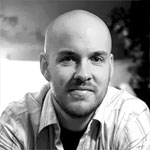
While there’s plenty to discuss about what was (or wasn’t) said during the Ham/Nye debate, I think the crux of the whole affair comes down to how one understands science.
The foundation of Mr. Ham’s argument is his distinction between what he calls historical and observational science:
There’s experimental or observational science as we call it, that’s using the scientific method: observation, measurement, experiment, testing … all scientists, whether creationists or evolutionists actually have the same observational or experimental science … When we’re talking about origins, we’re talking about the past, we’re talking about our origin, we weren’t there, you can’t observe that, whether it’s molecules-to-man evolution or whether it’s the creation account. And when we’re talking about the past, we like to call that origins or historical science, knowledge concerning the past.
For Mr. Ham, this differentiation between past and present methodologies has profound implications:
You can’t observe the age of the earth, and I would say that comes under what we call historical origins science. Now, just so you can understand where I’m coming from, yes, we admit we build our historical origins science on the Bible … There’s only one infallible dating method, it’s the witness who was there, who knows everything, who told us, and that’s from the word of God.
But differentiating between observational and historical science is a contrived manipulation that bisects science in a way that favors Ham’s specific position. It’s a not-so-subtle attempt to level the playing field, to try and claim that there’s no substantive evidential differences between the two “sides” — which provides the justification for the claim that there’s a very real debate to be had about creation and evolution. After all, none of us were around throughout creation to see what actually happened there, right?
Mr. Nye ably responds:
As far as ‘you can’t observe the past.’ I have to stop you right there. That’s what we do in astronomy. All we can do in astronomy is look at the past. By the way, you’re looking at the past right now. Because the speed of light bounces off of me and then gets to your eyes and I’m delighted to see that the people in the back of the room appear just that much younger than the people in the front. So this idea that you can separate the natural laws of the past from the natural laws that we have now, I think is at the heart of our disagreement. I don’t see how we’re ever going to agree with that if you insist that natural laws have changed. It’s a — for lack of a better word, it’s magical.
Mr. Nye is correct — we can’t make any direct, in-the-present observations. It’s all in the past. When it comes to the natural world, we are only witnesses to past events. And the best tool available for understanding the natural world — past, present and future — is science. Not a bifurcated science, but a holistic, comprehensive and robust science. In the words of Mr. Nye:
I’m looking for explanations of the creation of the world as we know it, based on what I’m going to call science. Not historical science. Not observational science. Science.
If I were to accept as true Mr. Ham’s understanding of science, then if I walked outside and saw snow on the ground I wouldn’t be able to conclude that it snowed. If I came home and found my house in disarray with items missing I couldn’t conclude that I was robbed. If I stepped off the edge of a high cliff I couldn’t conclude that I was about to fall to my death.
From Mr. Ham’s point of view, a person who didn’t watch the debate would have to conclude that it didn’t happen. And despite any evidence to the contrary, the debate will continue not to have happened right up until the Bible says that it did.
Which will never happen.
The good news for Ham and his ilk is that they never have to learn anything new. The bad news for the rest of us is that, in the real world, the only thing ignorance leads to is more ignorance.
 Dan Wilkinson
Dan Wilkinson
Dan is the Executive Editor of the Unfundamentalist blog. He is a writer, graphic designer and IT specialist. He lives in Montana, is married and lives with two cats.
Leave a Reply